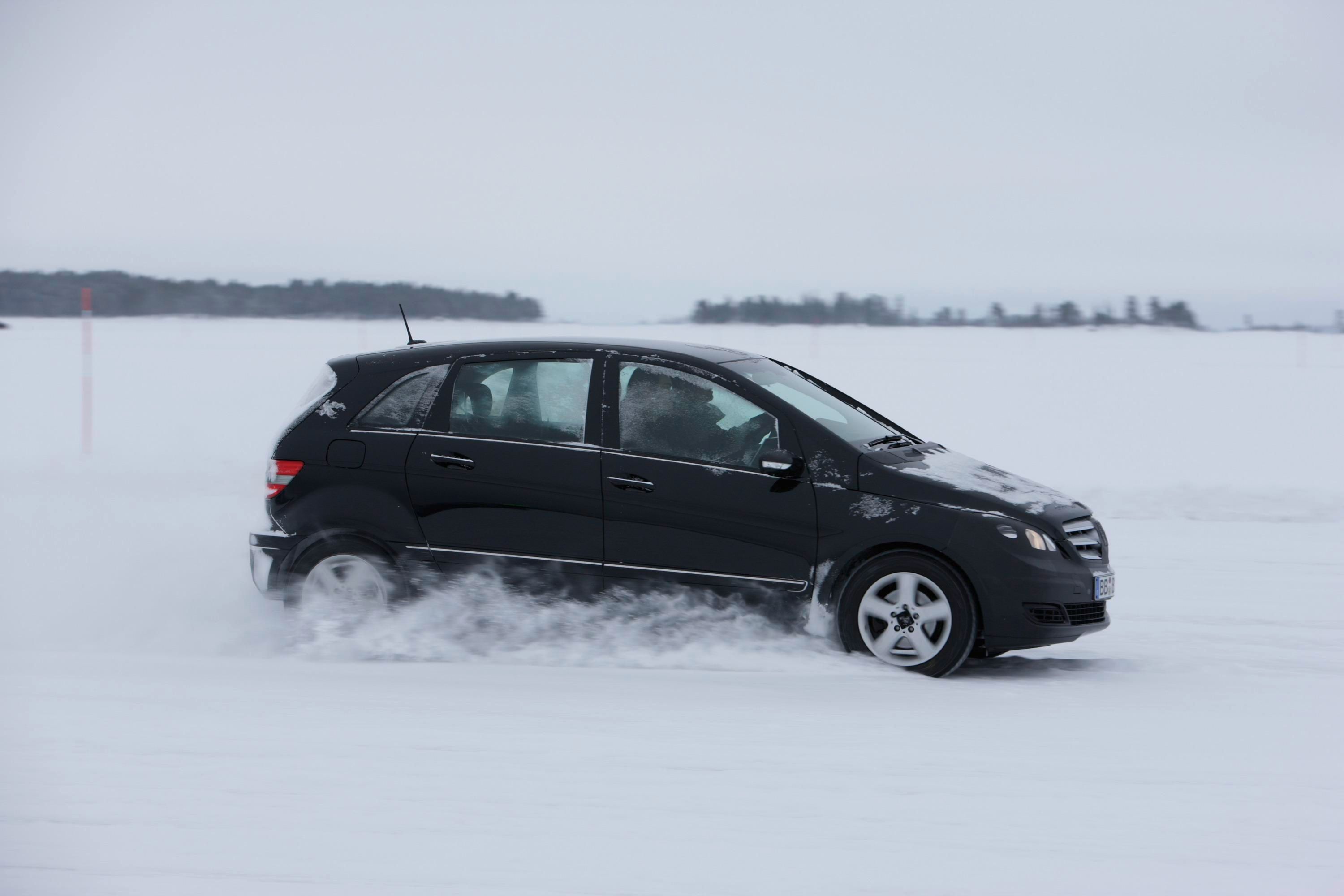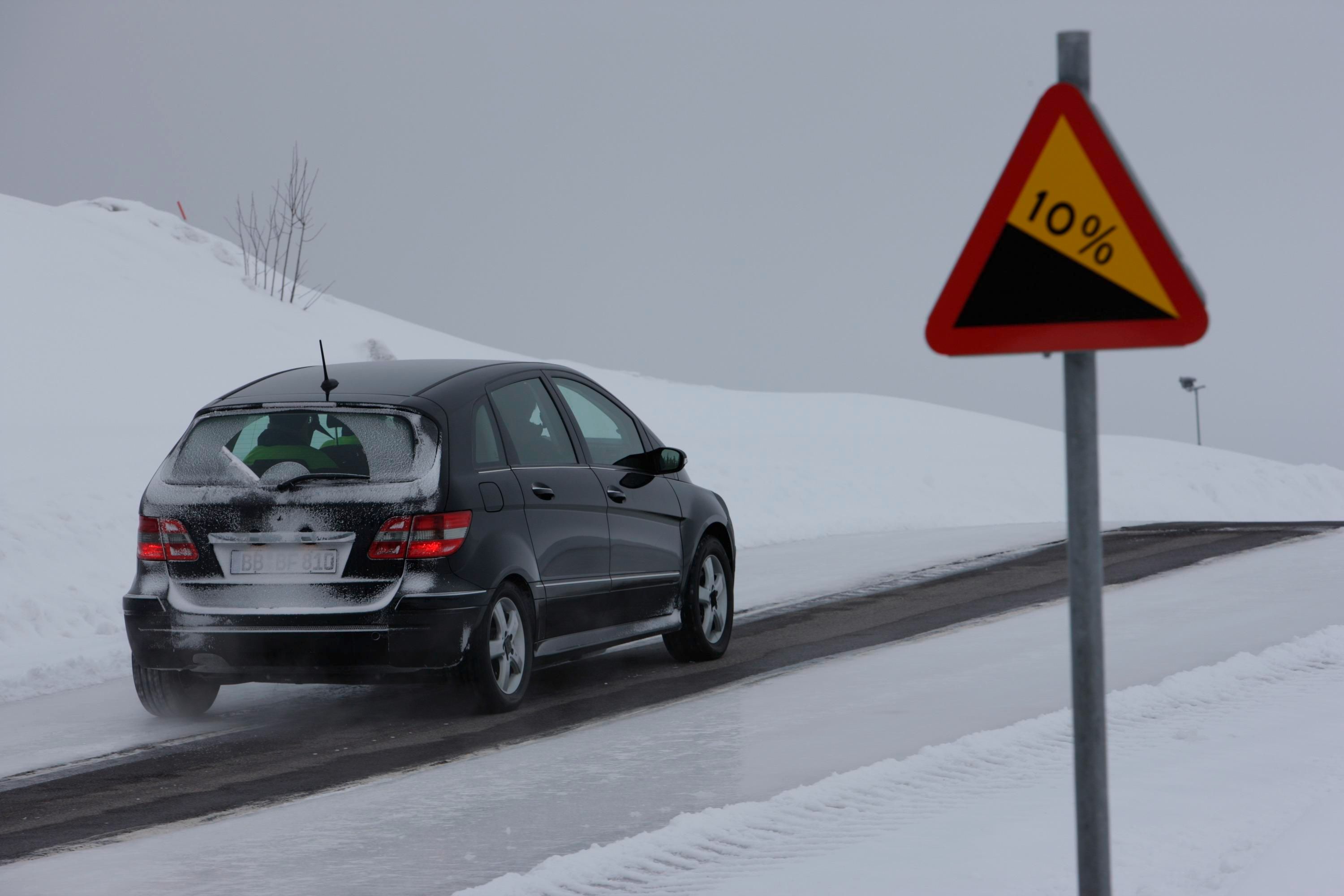The Mercedes-Benz B-Class with fuel-cell drive has passed its winter testing in northern Sweden with flying colours. At double-digit, below-zero temperatures, the zero-emission drive showed what it could do in the comprehensive test programmes. For example, cold start behaviour was subjected to thorough scrutiny. Although Daimler Research had already found a technical solution to the fuel cell’s start capability at -25 degrees Celsius, the engineers’ focus here was on the interaction between the different components under real-life winter conditions.
Mercedes will be launching the first series vehicle with a local, zero-emission fuel-cell drive in the summer of 2010. Small-series production of the B-Class F-CELL will commence in early 2010. A new generation of fuel-cell drive will be used to power this innovative vehicle. It is much more compact, while at the same time offering greater performance and is completely suitable for everyday use.
A further focus of the winter tests was on roadholding. This meant adapting the Electronic Stability Program (ESP) to the special requirements of a fuel-cell vehicle. A special feature in this context is that an electric motor exhibits different speed governing behaviour to that of standard combustion engines.
Dr. Thomas Weber, Daimler AG board member with responsibility for Research and Development at Mercedes Benz Cars, drew positive conclusions from the testing: “The results of the winter tests proved that we are on the right track with this innovative drive concept and have taken another important step on the road to reaching production standard. As with the standard test programmes for conventional vehicles, we will be subjecting the B-Class F-CELL to further rigorous testing over the next few months.”
First small series from 2010
The optimised fuel-cell system that Mercedes-Benz presented in 2005 in the F 600 HYGENIUS research vehicle forms the technical basis. This extremely compact fuel-cell system operates much more efficiently than previous generations. The newly designed “stack”, the fuel cell module, is roughly 40 percent smaller, yet generates 30 percent greater power, along with a 16 percent reduction in consumption compared to the F-Cell A-Class. The system also demonstrates a good cold start capability, thanks to innovations such as the electric turbocharger for air supply, and the new humidification and demisting system.
Compared to the F-Cell A-Class, a refined, more compact, yet more efficient system is used in the F-CELL B-Class. The electric motor develops maximum output of 100 kW/136 hp and a maximum torque of 320 newton metres. This means that the B-Class F-CELL offers extremely high roadholding standards that surpass those of a standard two-litre petrol engine. At the same time, the zero-emission fuel-cell drive in this family-friendly-design compact vehicle uses the equivalent of just 2.9 litres of fuel (diesel equivalent) per 100 kilometres – and all that with zero-emission.
Daimler AG’s fuel-cell fleet has now covered around 3.8 million zero-emission kilometres, giving the company more data, expertise and experience than any other manufacturer. With approximately 100 vehicles, it operates the largest fuel-cell vehicle fleet in the world. Its concept vehicles, passenger cars, vans and Citaro city buses are tested by customers under everyday conditions.


